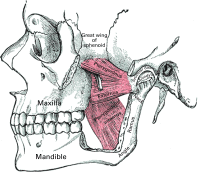Anatomical, functional, physiological and behavioural aspects of the development of mastication in early childhood
- PMID: 24063732
- PMCID: PMC3927374
- DOI: 10.1017/S0007114513002699
Anatomical, functional, physiological and behavioural aspects of the development of mastication in early childhood
Abstract
Mastication efficiency is defined as the efficiency of crushing food between the teeth and manipulating the resulting particles to form a swallowable food bolus. It is dependent on the orofacial anatomical features of the subject, the coordination of these anatomical features and the consistency of the food used during testing. Different measures have been used to indirectly quantify mastication efficiency as a function of children's age such as observations, food bolus characterisation, muscle activity measurement and jaw movement tracking. In the present review, we aim to describe the changes in the oral physiology (e.g. bone and muscle structure, teeth and soft tissues) of children and how these changes are associated with mastication abilities. We also review previous work on the effect of food consistency on children's mastication abilities and on their level of texture acceptance. The lack of reference foods and differences in testing methodologies across different studies do not allow us to draw conclusions about (1) the age at which mastication efficiency reaches maturity and (2) the effect of food consistency on the establishment of mature mastication efficiency. The effect of food consistency on the development of children's mastication efficiency has not been tested widely. However, both human and animal studies have reported the effect of food consistency on orofacial development, suggesting that a diet with harder textures enhances bone and muscle growth, which could indirectly lead to better mastication efficiency. Finally, it was also reported that (1) children are more likely to accept textures that they are able to manipulate and (2) early exposure to a range of textures facilitates the acceptance of foods of various textures later on. Recommending products well adapted to children's mastication during weaning could facilitate their acceptance of new textures and support the development of healthy eating habits.
Figures


 , Bakwin; ◇, Denzer;
, Bakwin; ◇, Denzer;  , Hohoff;
, Hohoff;  , Procter.
, Procter.


 ) and female (
) and female ( ) children(
61
). Values are means, with standard deviations represented by vertical bars.
) children(
61
). Values are means, with standard deviations represented by vertical bars.Similar articles
-
Masticatory behavior for different solid foods in preschool children according to their oral state.J Texture Stud. 2019 Jun;50(3):224-236. doi: 10.1111/jtxs.12387. Epub 2019 Feb 6. J Texture Stud. 2019. PMID: 30636045
-
A review on children's oral texture perception and preferences in foods.Crit Rev Food Sci Nutr. 2024;64(12):3861-3879. doi: 10.1080/10408398.2022.2136619. Epub 2022 Oct 27. Crit Rev Food Sci Nutr. 2024. PMID: 36300653 Review.
-
Fostering infant food texture acceptance: A pilot intervention promoting food texture introduction between 8 and 15 months.Appetite. 2021 Mar 1;158:104989. doi: 10.1016/j.appet.2020.104989. Epub 2020 Oct 16. Appetite. 2021. PMID: 33075444
-
The Art of Chewing: Optimizing Early Life Sensory Exposure to Develop Healthy Eating Behavior.Nestle Nutr Inst Workshop Ser. 2024;100:90-99. doi: 10.1159/000540142. Nestle Nutr Inst Workshop Ser. 2024. PMID: 39586288 Review.
-
Patterns and predictors of food texture introduction in French children aged 4-36 months.Br J Nutr. 2018 Nov;120(9):1065-1077. doi: 10.1017/S0007114518002386. Epub 2018 Sep 11. Br J Nutr. 2018. PMID: 30203737
Cited by
-
Growth of Neanderthal infants from Krapina (120-130 ka), Croatia.Proc Biol Sci. 2021 Nov 24;288(1963):20212079. doi: 10.1098/rspb.2021.2079. Epub 2021 Nov 24. Proc Biol Sci. 2021. PMID: 34814754 Free PMC article.
-
Comprehensive Dental Treatment under General Anesthesia Improves Mastication Capability in Children with Early Childhood Caries-A One-Year Follow-Up Study.Int J Environ Res Public Health. 2022 Dec 30;20(1):677. doi: 10.3390/ijerph20010677. Int J Environ Res Public Health. 2022. PMID: 36612993 Free PMC article.
-
Orofacial Muscles: Embryonic Development and Regeneration after Injury.J Dent Res. 2020 Feb;99(2):125-132. doi: 10.1177/0022034519883673. Epub 2019 Nov 1. J Dent Res. 2020. PMID: 31675262 Free PMC article. Review.
-
Feeding and Swallowing Disorders in Pediatric Neuromuscular Diseases: An Overview.J Neuromuscul Dis. 2015 Nov 20;2(4):357-369. doi: 10.3233/JND-150122. J Neuromuscul Dis. 2015. PMID: 27858755 Free PMC article.
-
Dynamic Oral Texture Properties of Selected Indigenous Complementary Porridges Used in African Communities.Foods. 2019 Jun 21;8(6):221. doi: 10.3390/foods8060221. Foods. 2019. PMID: 31234403 Free PMC article.
References
-
- Stevenson RD & Allaire JH (1991) The development of normal feeding and swallowing. Pediatr Clin North Am 38, 1439–1453 - PubMed
-
- Butte N, Cobb K, Dwyer J, et al. (2004) The start healthy feeding guidelines for infants and toddlers. J Am Diet Assoc 104, 442–454 - PubMed
-
- World Health Organization (2006) WHO Multicentre Growth Reference Study Group. WHO Child Growth Standards: Length/height-for-age, Weight-for-age, Weight-for-length, Weight-for-height and Body Mass Index-for-age: Methods and Development. Geneva: World Health Organization.
-
- To masticate. In Merriam-Webster Online Dictionary.http://www.merriam-webster.com/dictionary/masticate (accessed 26/06/2013).
-
- Forde CG, van Kuijk N, Thaler T, et al. (2013) Texture and savoury taste influences on food intake in a realistic hot lunch time meal. Appetite 60, 180–186 - PubMed
Publication types
MeSH terms
LinkOut - more resources
Full Text Sources
Other Literature Sources
Medical

